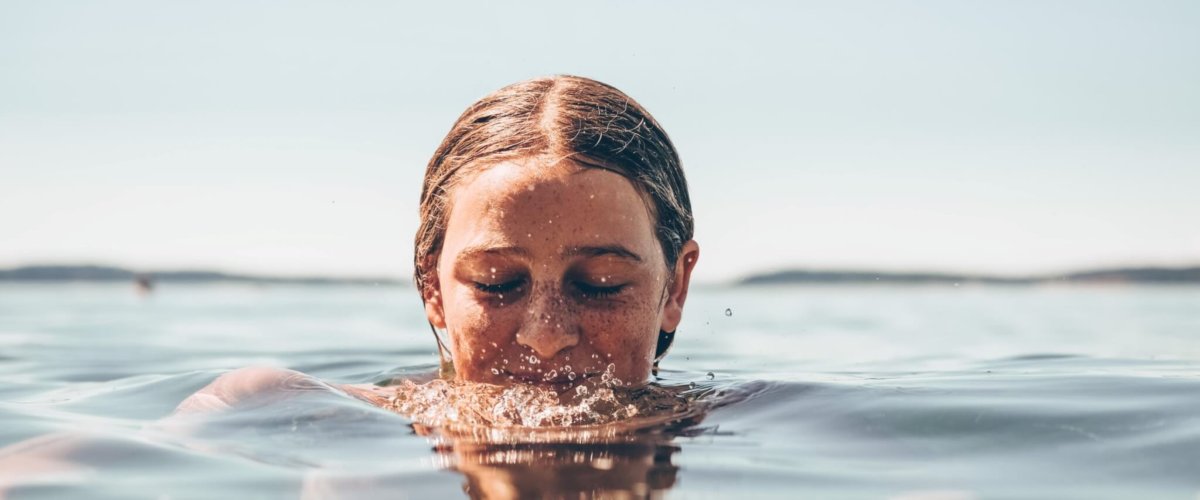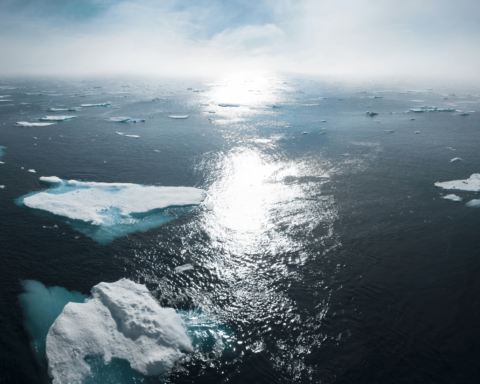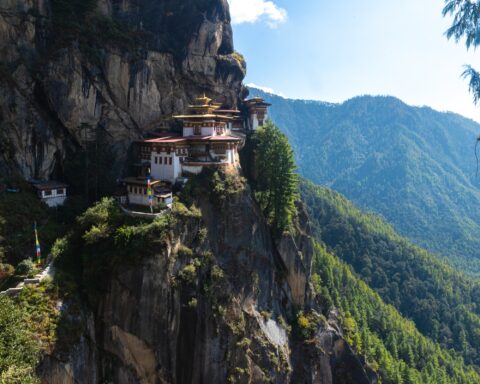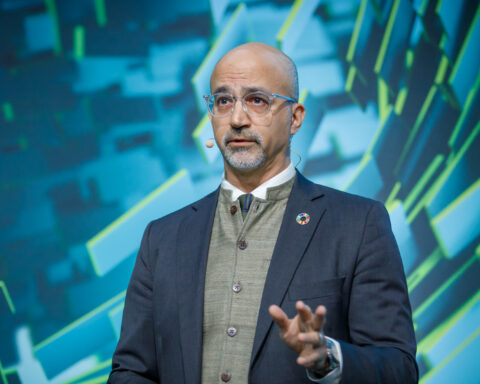Valuing water – the topic of this year’s United Nations Water Day – inspires us to think about many different aspects of our relationship to water. What does water mean to us in our culture and our daily lives? How do we treat this resource? And which interesting projects are there addressing pressing challenges such as water pollution or water scarcity?
Austria and its relationship to water
Water and its value is, for many Austrians including myself, something we strongly identify with in our country and which makes us proud. It is referred to in our national anthem, and also in the famous Austrian song, “I am from Austria”, in which Reinhard Fendrich does not shy away from water references. When asked what belongs to our identity, nature, mountains, and lakes are the first things that come to mind. Water plays a significant role in our daily lives: We need it for hydration and hygiene (which we are even more aware of in times of a global pandemic). For sports and leisure purposes it is important to us, but also an economic factor for the tourism industry. It is a habitat for many plants and animals. And many more examples could be added. Water is a vital resource in all its aspects, and it needs to be valued and protected.

Due to its geographic and topographic location, Austria is in a comfortable position when it comes to water. Although it can vary regionally – it has sufficient drinking water resources and reserves. The quality of Austria’s tap water is also very high. So, get yourself a fresh glass of tap water, enjoy a sip and continue reading.
So how about the situation outside Austria? Almost two-thirds of the world’s population suffers from water shortage during at least one month per year. Even in the European Union, water is unevenly distributed due to geography and different climate conditions. Countries like Cyprus, Spain, and Bulgaria face seasons where their demand for water is higher than the available amount, even countries further north like Belgium are affected by high water stress. But if we only look at country wide statistics, the following aspects are not considered: seasonal changes, regional differences (which can be high, for example in Australia), or limited access to water (e.g. because of missing infrastructure).
How do we use our water?
The UNESCO world water development report of 2020 shows that global water usage is six times higher than 100 years ago. And counting. Which is problematic. Although water is a renewable resource, it is also a limited one. Worldwide, 70% of water is used for agriculture, 20% for industry, and 10% for households. In Austria, however, this is not the case: only 5% of the water is used for agriculture, two-thirds are used for industry, and one-third for households. This is a good reason to take a closer look at Austria’s water consumption per household, where an average of 130 liters of water per person, per day is used. Of the 130 liters, 22% is used for showering and taking baths, 25% for flushing the toilet, 10% for laundry, 2% for dishes, 14% for pools and plants, and 27% flows from the taps in bathrooms, toilets, and the kitchen.
Personal water footprint
In addition to the water that we use day by day in its pure form, there is also a “hidden” water consumption. For every product we buy, use, wear or eat, water is needed to produce it. The water footprint includes both direct and indirect water use and consists of three components: green, blue, and gray. The green water footprint tells us how much rainfall or soil moisture water was consumed, blue indicates the amount of surface or groundwater, and gray shows the volume of freshwater that is required to absorb polluted water until a specific water quality standard is met. All together it helps us to have a broader understanding of water consumption. Like a carbon footprint, the water footprint can be calculated. Our personal water footprint depends on our everyday decisions and lifestyle. Are you curious about yours? Have a look at the calculator provided by waterfootprint.org. Being aware of our own water footprint or the water footprint of products might encourage us to be more mindful of our overall consumption.
Some general ideas on how every one of us can play a part in saving water:
- Use a refillable bottle and enjoy fresh tap water
- A quarter of the domestic water literally goes down the toilet – whenever possible, use the short flush option.
- Wait until you have a full load of laundry before pressing the start button on your washing machine.
- If you have a garden: collect rainwater to water your plants, or if you have a car – to wash it.
- Be aware of your diet, because different foods and beverages also have different water footprints. This doesn’t mean that you have to drastically change your diet – since there are many aspects to consider, not only hidden water consumption. But small changes can help too.
- Find your next favorite jeans, dress, jacket, t-shirt, etc. at a second hand shop or on one of the many online platforms for buying and selling second-hand clothing.
Innovative ideas to preserve the blue gold
Fortunately, there are many ideas on how to preserve or even restore natural water resources. Or make them accessible to those who need it. At the 2018 “Agri-Water Innovation Challenge”, South African and Austrian innovators presented their ideas on how to address the water crisis in Cape Town. The ideas ranged from new water filtration methods, as presented by the winners, to innovative water management solutions. One of the two winners of the challenge was fluvicon by Thomas Griessler, who is developing a novel filter system with his team. They are using forward osmosis, a technology that follows the basic principle of every living cell. It does not use chemicals and can be used to obtain drinkable water from waste water or sea water. Murendeni Mafumo developed a simple and accessible water filtration system that uses macadamia nut shells as carbon filters and nanofiber membranes to produce clean and safe drinking water.
We also welcomed “ideas worth spreading” about water on the TEDx stage. In her TEDx talk, researcher Kathrin Schuhen discusses a project she founded called “Wasser 3.0”. Schuhen and her team have been working to develop a new and highly applicable approach to removing microplastics from water.
So what are microplastics? Why are they harmful, and why is it difficult to filter them out of the water? Microplastics are pieces of plastic that are smaller than 5mm. They can get into water in many different ways. For example, some cosmetic products can contain microplastics, such as body scrubs or toothpaste. Microplastics can also be created by washing synthetic clothing or by trash that has not been properly disposed of. Some microplastics float on water, some sink to the ground, and some flow in the middle. It is not possible to “just” filter them out because they are capable of clogging a filter. Microplastics are harmful to the ecosystem in the oceans, but they also enter the human body through the food chain. This is a problem that should not be underestimated, as everyone of us “consumes” enough microplastics to equal the weight of a credit card, weekly. Whether and how this may affect our health in the long run cannot be foreseen at the moment.
The method that Kathrin Schuhen and her team have developed works through a process called “clumping and skimming”. One can think of it like this: first, the microplastics will be “glued“ together to bigger pieces, and these pieces, which look like popcorn, can be removed from the water with a skimmer. Their mobile container solution makes it possible to use the technology anywhere and on a large scale. For example, it can be installed in washing machines in the textile industry to filter microplastics before wastewater enters a sewage plant, preventing it from entering the water cycle in the first place.
Enjoy her talk “Removing Microplastics from Water – Challenge Accepted” at the TEDxVienna 2019 conference “On the edge” to find out more about her motivation and journey.
Particularly on a day like International Water Day, we should be aware that we have the privilege of enjoying a very special resource – water. Good water quality cannot be taken for granted. Each and every one of us plays an important role in preserving this resource. Let’s use this day to reflect on our water consumption, keep our good habits and maybe pick up one or two new ones. Let’s stay curious and keep an eye out for innovations and ideas worth spreading that will have a positive impact on this wonderful resource.
Header image by Erik Dungan on Unsplash





